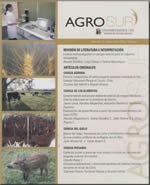FARM SUBDIVISION IN THE MUNICIPALITY OF ANCUD, LOS LAGOS REGION, CHILE, BETWEEN 1999 AND 2008
Main Article Content
Abstract
Farm subdivision is the division of land, the consequent retrenchment, with an increase in the number of owners over time. In 1980 the Decree Law Nº 3,516 was enacted with the purpose of permitting land subdivision while ensuring agricultural viability by minimizing the subdivisions. The objective of this investigation was to characterize the process of subdivision of rural properties in the Municipality of Ancud, Chiloé Province, between 1999 and 2008 identifying the magnitude, frequency and intensity of subdivisions.
This characterization was carried out using the subdivision records provided by the Ancud office of Servicio Agrícola y Ganadero (SAG). The information was incorported into the base cartography of Ancud Municipality. The results showed that 962 land holdings were subjected to farm subdivision during the study period (38.7% of the total) generating 4,633 new subdivisions. About 80% of the subdivided land and 96% of the resulting lots, had sizes corresponding to small-hold properties (0-50 ha). The sectors with the highest frequency of subdivisions were Coipomó, Chacao and Pupelde. Caulin, Pupelde and Lechagua were the areas found to have the greatest intensity of subdivisions. The underlying drivers of this process in the study area were diverse and difficult to identify, but two important drivers appeared to be the development of tourism initiatives and the generation of new urban-rural residency areas.

